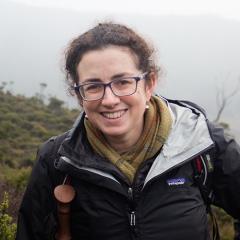Per- and polyfluoroalkyl substances (PFAS) are a group of manmade chemicals that are used in many products, including Aqueous film forming foams (AFFF), historically used for emergency and training at Airservices stations.
Since 2013, we have investigated PFAS exposure in Airservices ARFFS and EVT employees (current and former) in several cross-sectional and longitudinal studies by measuring PFAS serum concentrations in participant’s blood. We have found that firefighters with history of using PFAS containing firefighting foam have elevated levels of certain PFAS in their blood, compared to the general population. Since the replacement of AFFF at Airservices stations, we have observed decreases in PFAS concentrations among participants (both exposed and non-exposed), and blood donation have been found to be associated with greater decreases. A water contamination event at an airport around 2021 led to additional recruitment and higher frequency serum sampling including sampling among the airport employees. We observed that airport employees had experienced recent elevated PFAS exposure, but since arranging alternative drinking water at the station, PFAS serum concentrations have been observed to decrease among participants, most of which chose to (repeatedly) donate plasma or blood to reduce PFAS serum concentrations.
Our previous studies have provided important information to Airservices as well as their employees regarding PFAS exposure. The findings have highlighted the importance of continued monitoring of PFAS serum concentrations over time to be able to ensure that PFAS serum concentrations are continuing to decrease among Airservices ARFFS employees who have experienced exposure in the past and determine whether there is any evidence of new (or potentially ongoing) exposure for ARFFS.
This current study is a follow-up study to the previous exposure studies. The overall objective of this study is to continue to assess PFAS exposure among current and former ARFFS and EVT employees by measuring PFAS blood concentrations over time.
The specific aims are to:
- Assess if PFAS serum concentrations are changing among participants differently compared to the general population (i.e. assess if there is ongoing or new occupational exposure).
- Assess if there are any work-related factors (e.g. station, job/position) associated with observed trends in PFAS serum concentrations among ARFFS participants.
- Help us understand more about the relationship between PFAS levels and levels of biochemistry measurements of health.
The current study will be conducted over the course of 4 years and will involve collection of questionnaire data and blood samples at two time points, approximately two years apart (participants who are blood/plasma donors have the option to provide yearly blood samples as their expected elimination of PFAS is faster). The study is recruiting both participants from our previous studies as well as new participants.
If you are interested in joining the study, you can find more information on our Participants page.




